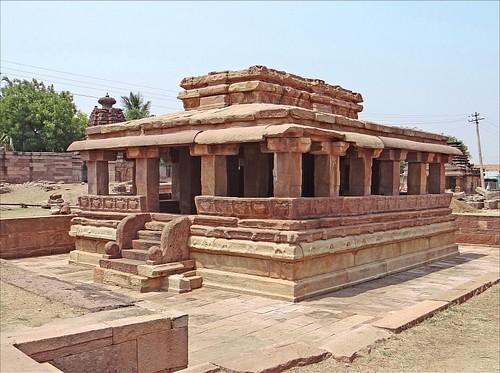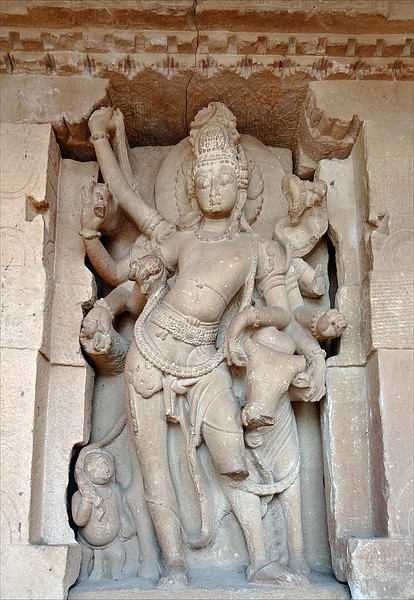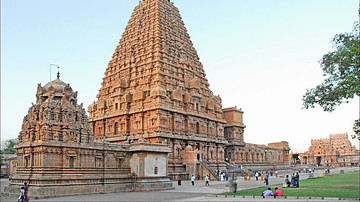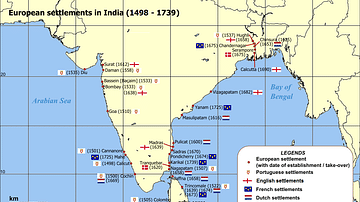
Aihole (Ayyavole) was an ancient walled city in Karnataka, central India. Aihole was the first regional capital of the Karnakata region under the rule of the Chalukyas. The large number of early Hindu temples and shrines at the site mostly date from the 6th to 8th century CE when the city was at its zenith of prosperity and power.
Historical Overview
Aihole prospered from the mid-6th century CE under the regional rule of the Early Western Chalukyas, one of the most important Deccan dynasties in the late Gupta period. Notable rulers were Pulakeshin I (c. 535-566 CE) and Pulakeshin II (r. 609-642 CE) who were powerful enough to entertain diplomatic relations with distant Persia. Another significant ruler and bringer of prosperity to the region was Vikramaditya I (r. 655-681 CE) who regained control of the Chalukya capital Badami following its loss to regional rival, the Pallava king. Aihole was an important regional capital (one of four) and the fortification walls and gateways which surround the site are unique survivors from the 6th century CE in ancient India. The Chalukya dynasty fell to the Rashtrakutas in the mid-7th century CE.
Architecture & Monuments
There is a mix of architectural styles at the site and, due to the lack of later rebuilding, Aihole provides a valuable record of Indian temple architecture before it fully evolved into a canonical style. Most temples at Aihole are Hindu, but there are some early Buddhist caves and Jain monuments. There are a number of rock-cut caves at Aihole which are embellished with architectural sculpture cut into the sandstone. The Ravula Phadi cave has a ten-armed Shiva dancing along with the Saptamatrikas, Durga attacking Mahisha with a spear, and Bhudevi being rescued by Varaha. The Ravanaphadi cave is notable for its life-size high relief sculpture of four dancing Matrkas and a Shiva Gangadhara, c. 600 CE, which shows the great god gently lowering Ganga - a personification of the River Ganges - to earth using his hair. Jain architecture at the site includes the Meguti temple, perched atop an acropolis, which was first built in 634 CE.
Many of the Hindu temples display typical characteristics of northern Indian architecture - the sikharas (a four-sided superstructure or tower formed using many decorative layers of stonework), the nasika or sukanas (projecting facade medallions), a gavaksa (double-curved arch), and an amalaka (a large ribbed circular stone on top of the sikhara). The temples have stone slab roofing, many have stone lattice windows, and most have an entrance hall and porch accessed via a short flight of steps, the latter being a typical feature of Early Western Chalukya architecture.
A good example incorporating all of these features is the 8th-century CE temple of Durga, commissioned by Komarasengama, a private citizen. This structure is also unusual as it has columns running around the building to form a peristyle. The garbhagriha (sacred sanctuary or shrine) end of the building forms an unusual semicircular curve. The sculpted panels such as those depicting Durga in her battle with the buffalo demon and Shiva alongside Nandi are amongst the finest examples of all ancient Indian sculpture.
The temples carry rich architectural sculpture on pillars and ceilings, especially depictions of such major gods as Vishnu, Shiva, and Brahma. The temple porches also have finely carved ceiling slabs showing nagas coiled in spirals. In contrast, the exterior walls are generally austere and carry neither the sculpture nor niches so common to southern and later Indian temples. Besides the larger temples, Aihole also has a great number of smaller shrines, many of which have domes.






